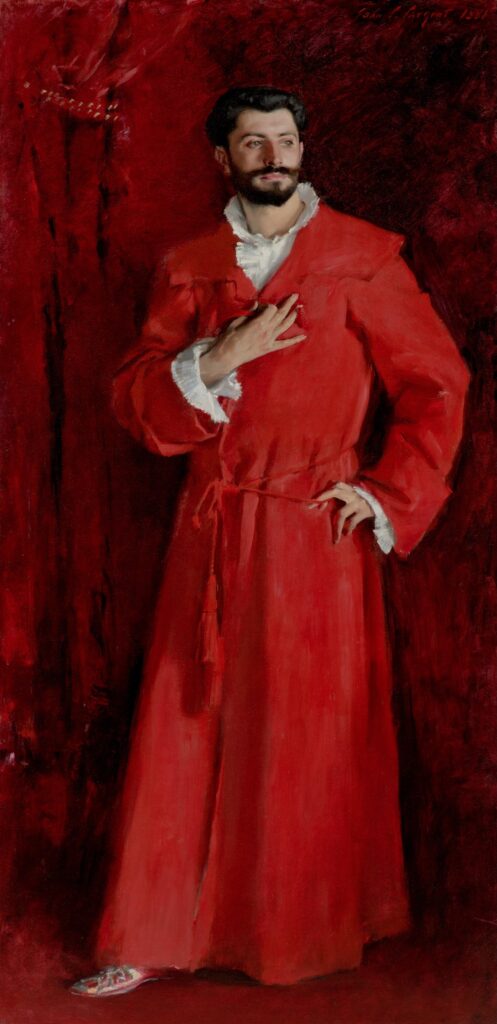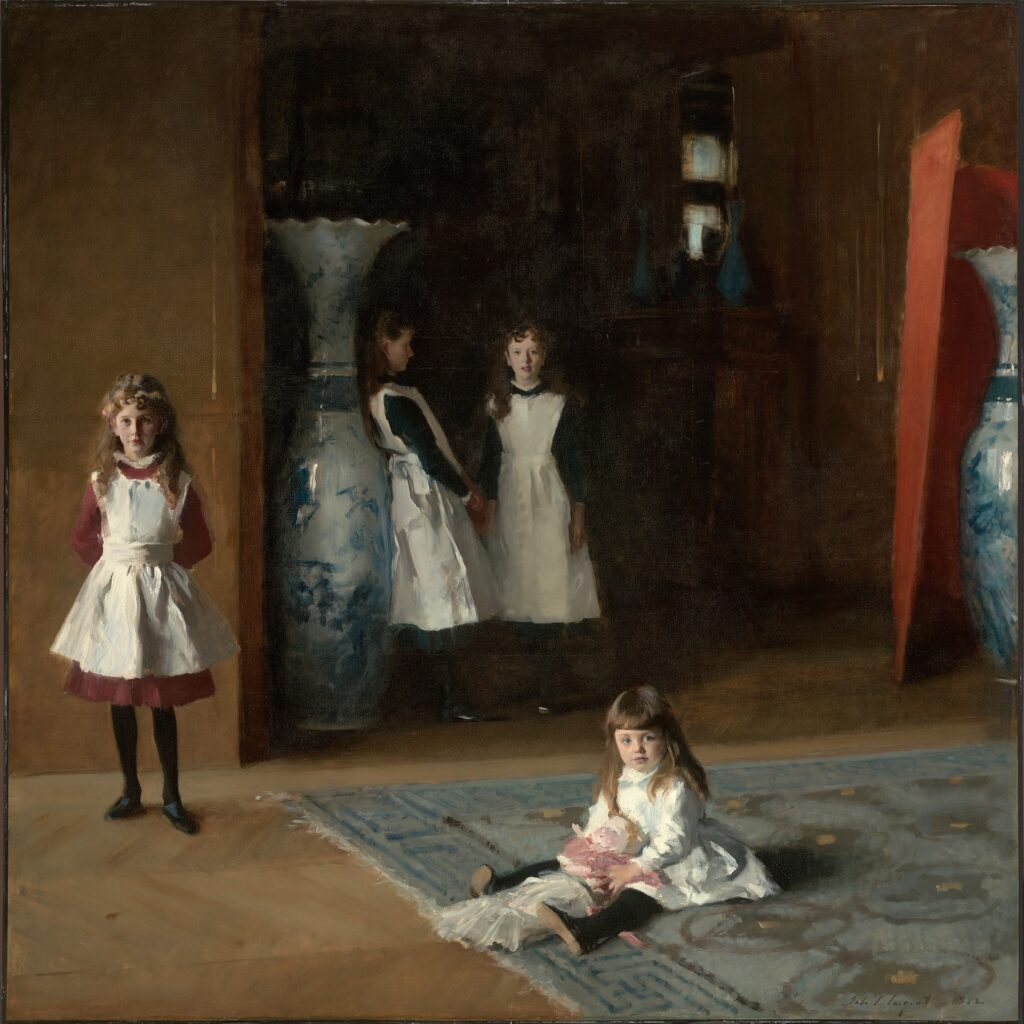Once the Stuff of Scandal, John Singer Sargent’s ‘Madame X’ Draws a Prominent Place in the Met’s ‘Sargent and Paris’
Is Sargent’s ‘The Daughters of Edward Darley Boit’ the finest painting extant by an American artist? It’s a wildly ambitious and deeply nuanced image fleshed out with a bravura that makes the heart beat faster.

A soon-to-open exhibition at the Metropolitan Museum of Art, “Sargent and Paris,” is centered on a hometown perennial, John Singer Sargent’s “Madame X” (1884). New Yorkers have come to well know the portrait of Virginie Amélie Avegno Gautreau, the sinuous contours of whom have been in the museum’s permanent collection since 1916. If the image doesn’t have the iconographic heft of another staple of the Met’s collection, “Washington Crossing the Delaware” (1851) by Emmanuel Leutze, “Madame X” has gained its own peculiar ubiquity.
Sargent’s portrait was once the stuff of scandal. Upon being exhibited at the Paris Salon of 1884, “Madame X” made the most libertine members of the French citizenry clutch their pearls in horror — in part, because the subject wore no pearls to distract from her plunging décolleté. It didn’t help that Mademoiselle Gautreau was American as well as a social climber who was considerably younger than her French banker husband.
Sargent hoped that the portrait would propel his reputation in France. Monsieur and Madame Gautreau thought it advantageous to attach their fortunes to a rising star. The public wasn’t having it. Sargent’s friend and fellow painter, Ralph Wormely Curtis, reported that mobs of onlookers surrounded “Madame X” to ridicule her “horrible beauty.” The novelist and critic Henry James, putting it with typical delicacy, stated that the notorious painting “had not the good fortune to please the public at large.”

Critics harped about the picture’s “atrocious” coloring. The gossip surrounding the artist’s not-so-anonymous model didn’t help. Having been roundly mocked, Sargent skedaddled to London — or so the received wisdom has it. In curator Stephanie L. Herdrich’s catalogue essay, she admits that the painter was “irrevocably changed” by the controversy, but “Icarus-like, a somewhat chastened Sargent landed back on earth and set about rebuilding his career with deliberate care.”
The gallery of “Sargent and Paris” that highlights “Madame X” also contains Sargent’s unfinished replica of the painting — that is to say, the version without the strap that was later added on to Gautreau’s shoulder — as well as portrait studies done in graphite and charcoal. The latter are swiftly set-down with no diminution in terms of specificity, meaning, in this case, the distinctive slope of the model’s profile and her amplitudinous bosom. Is it just me or does a corresponding oil-on-panel, the diminutive “Madame Gautreau Drinking a Toast” (1882-83), confirm the rumors of the sitter’s louche demeanor?
Sargent arrived at France as an ambitious and prodigiously gifted 18-year-old and took advantage of the city’s artistic amenities, not least the collection of the Louvre. Parisian social circles took to the young American: His ability to converse in French, Italian, and German helped grease the wheels, but so, too, did an almost otherworldly gift for putting oils to canvas. Sargent made studies after Velásquez and Hals, traveled to Holland, Italy, Spain, and Morocco, and became friends with Claude Monet and Auguste Rodin.

A French critic of the time rued that the Americans “have painters, like Mr. Sargent, who take away our medals, and pretty women who eclipse ours.” What a good Parisian of yore dubbed “pretty,” the Met corrals under the banner of “Fascinating Portraits,” in which a handful of fashionable and, yes, pretty women have their thunder undermined by the arresting “Dr. Pozzi at Home” (1881). In his resplendent red robe, the good doctor is, let’s admit it, one sexy beast.
In a gallery dedicated to his Parisian milieu, Sargent’s contemporaries are given a gracious nod; these include Edouard Manet, James Abbott McNeil Whistler, Auguste Renoir, and his former teacher, Carolus-Duran. A host of institutions and collections the world over have lent their Sargents to the Met, chief among them the Boston Museum of Fine Arts.
Is the Boston MFA’s “The Daughters of Edward Darley Boit” (1882) the finest painting extant by an American artist? By my lights, yes: It’s a wildly ambitious and deeply nuanced image fleshed out with a bravura that makes the heart beat faster. New Yorkers have an exemplary opportunity to make up their own minds in what is sure to be a well-traveled and likely over-crowded “Sargent and Paris.”

